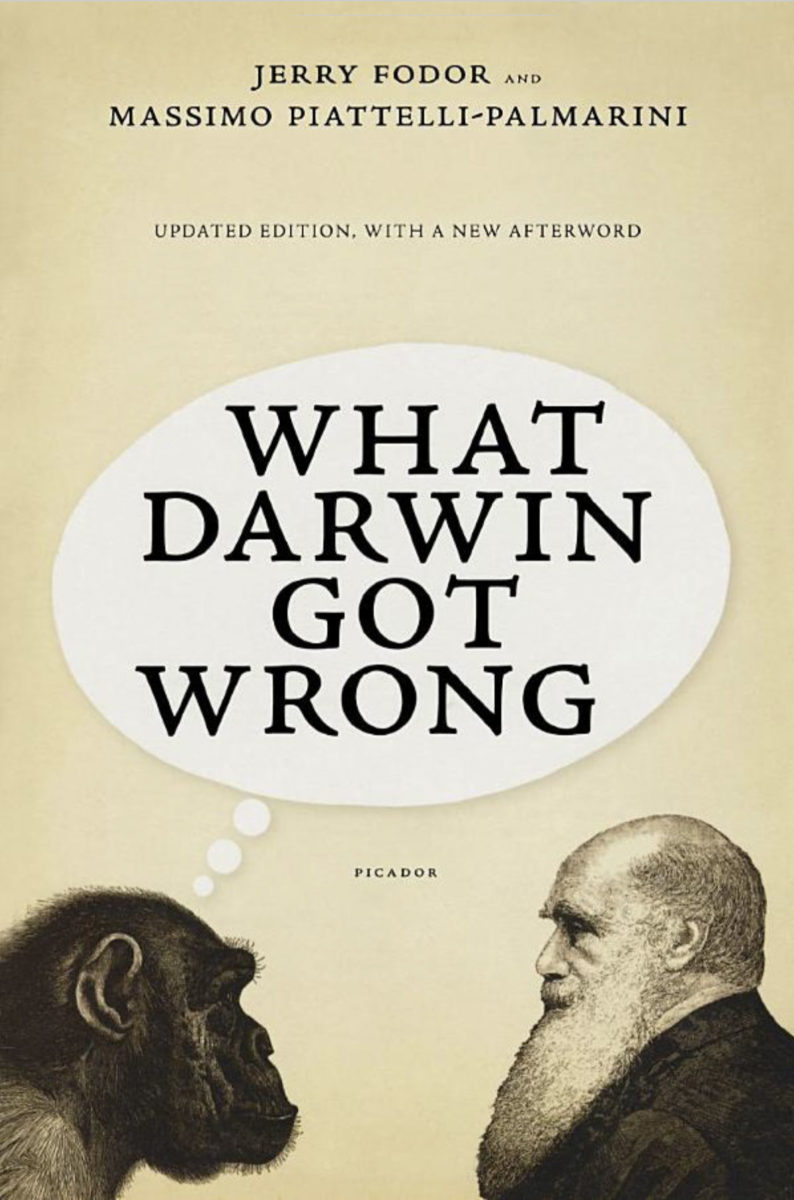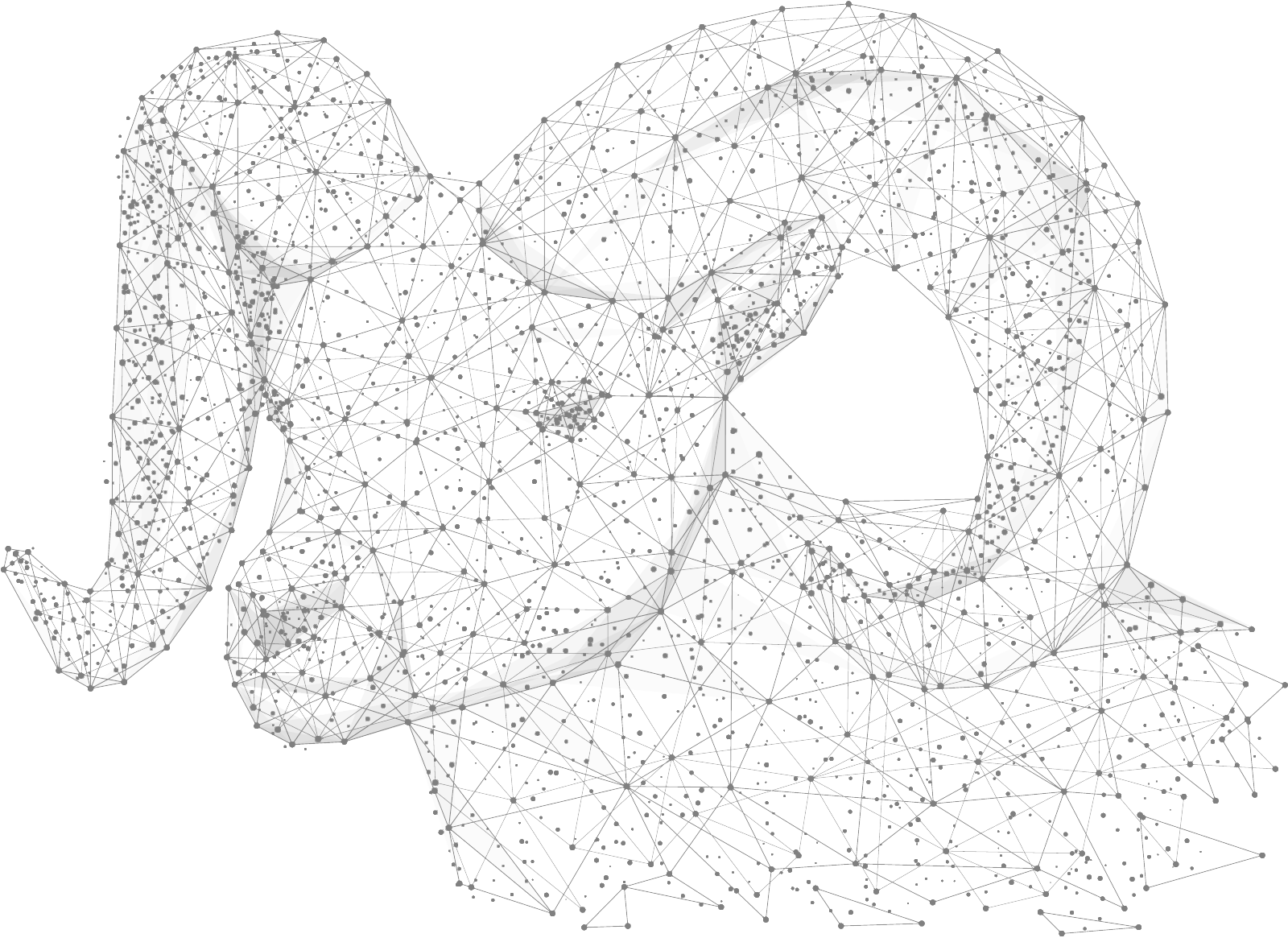Jerry Fodor and Massimo Piatelli-Palmarini’s book What Darwin Got Wrong was published in 2010. Having read it now, perhaps belatedly, I can report that it is a masterpiece. Fodor is a leading philosopher, and Piatelli-Palmarini is a leading cognitive scientist. Their analysis of natural selection is meticulous and devastating. They are both atheists — they do not come to this debate with theistic presumptions. They demonstrate that natural selection is, in their word, empty. It’s a meaningless concept that should be abandoned.

I’ll try here to give a précis of their argument. I heartedly recommend buying their book. It’s available on Kindle, and although it’s not an easy read, it is written with as much clarity and brevity as the subject permits. The last chapter is a very nice summary of the argument. What follows is a summary of the summary.
F&P-P begin their argument with the observation that phenotypic traits on which natural selection acts are often linked at the genetic level. It is unusual to find a specific trait that can be selected without selecting for other traits. Cellular genetics is a complex interconnected affair. A change at the level of the gene generally has complex effects on phenotype.
When we say that natural selection acts, how do we know which phenotype is the object of selection, and which are free-riders? Preservation of one trait preserves linked traits. Gould and Lewontin recognized this dilemma. In their paper “The Spandrels of San Marco and the Panglossian Paradigm: A Critique of the Adaptationist Programme” they take to task the adaptationist (strict natural selection-ist) view that natural selection can select for specific phenotypes that are linked to other phenotypes. They call the ostensibly selected phenotypes arches, and the free-rider unselected phenotypes spandrels, referring to the difference between the structural arches in cathedrals and the decorated spandrels — the spaces between the arches — that serve an artistic, but no structural, purpose.
Gould and Lewontin point out, correctly, that phenotypes in nature are composed of arches and spandrels — traits that enhance survival, and traits that are linked to survival traits genetically, but which provide no survival advantage themselves. They argue that adaptationist (natural selection-ist) explanations fail to take into account the fact that natural selection cannot distinguish between arches and spandrels, and that therefore invocation of natural selection, which is blind to the arch/spandrel dichotomy, is often an inadequate evolutionary explanation.
F&P-P unpack Gould’s and Lewontin’s critique, applying logical rigor. They point out that genetically linked traits are coextensive. Ya’ select for one, ya’ select for the other. They come as a package. F&P-P ask:
How can natural selection distinguish between, on the one hand, phenotypic traits that affect fitness and, on the other hand, their endogenously linked phenotypic correlates… selection [cannot] apply differentially to coextensive properties.
So merely invoking “natural selection” fails to provide an explanation for the survival of a trait, because natural selection is blind to the difference between traits that enhance survival and traits that are free-riders and irrelevant to survival, as long as the traits are linked.
F&P-P propose that there are two ways in which natural selection could be a genuine explanation: if natural selection can be understood as acting on counterfactuals, or if natural selection can be understood as acting according to physical laws (of evolution).
A counterfactual is a statement of what would be the case if something untrue happened. An example of a counterfactual is: “If I were PZ Myers, I wouldn’t say such silly things on Pharyngula.” I’m not PZ Myers, but if I were…. For natural selection to be a genuine explanation for the survival of a specific trait that is linked to other traits, it would be necessary to invoke a counterfactual about natural selection: “If the selected trait were not linked to free-riders, it would still be selected.” Which is the way that we generally try to invoke natural selection of linked traits. Selection is for the pumping function of the heart (selected trait), not for the sound it makes (linked free-rider). If pumping and noise-making weren’t linked, it is the pumping, not the noise-making, that would be selected.
But F&P-P point out that counterfactuals are intentional statements — they refer to concepts in a mind, not to external physical things. And of course natural selection has nothing to do with a mind. That is the whole point of natural selection. It pays no mind at all.
So natural selection can’t select according to counterfactuals. “If these traits weren’t linked, this is the trait I’d select for” is a thought specifically denied to a blind watchmaker. Natural selection is mindless, and is blind to counterfactuals.
F&P-P point out that the other way that natural selection could provide an evolutionary explanation is if selection followed a natural law, like a law in physics. If there is a law-like correlation between a type of trait and selection for that trait, then a correspondence between natural selection and one of several linked traits could be established.
But F&P-P point out that there seem to be no laws of selection:
[T]he problem is that it’s unlikely that there are laws of selection. [I]t’s just not possible that there are laws that relate phenotypic traits per se to fitness. What (if any) effect a trait has on fitness depends on what kind of phenotype it is embedded in, and what ecology the creature that has the trait inhabits.
The adaptive value of a phenotype depends critically on its ecological niche. Fins help if you live in water. Fins don’t help if you live in the desert. Are fins adaptive? It depends. There is no “Law of Fins” that determines the adaptiveness of fins, independent of the ecological niche the finned critter inhabits.
F&P-P put it succinctly:
[I]f you wish to explain the effects that a phenotypic trait has on a creature’s fitness, what you need is not its history of selection but its natural history. And natural history offers not laws of selection but narrative accounts of causal chains that lead to the fixation of phenotypic traits. Although laws support counterfactuals, natural histories do not; and, as we’ve repeatedly remarked, it’s counterfactual support on which distinguishing the arches from the spandrels depends.
The explanation for a critter’s phenotype vis-a-vis its fitness is its natural history, not its history of natural selection. But natural history is a narrative, not a law.
Natural history is just one damned thing after another. This should seem, on reflection, unsurprising since, to repeat, natural history is a species of history, and history is itself just one damned thing after another… Darwin made the same sort of mistake that Marx did: he imagined that history is a theoretical domain; but what there is, in fact, is only a heterogeneity of causes and effects.
F&P-P sum up their argument:
What’s essential about adaptationism, as viewed from this perspective, is precisely its claim that there is a level of evolutionary explanation. We think this claim is just plain wrong. We think that successful explanations of the fixation of phenotypic traits by ecological variables typically belong not to evolutionary theory but to natural history, and that there is just no end of the sorts of things about a natural history that can contribute to explaining the fixation of some or other feature of a creature’s phenotype. Natural history isn’t a theory of evolution; it’s a bundle of evolutionary scenarios. That’s why the explanations it offers are so often post hoc and unsystematic.
Natural selection is not a level of explanation. In F&P-P’s cogent phrase, natural selection is empty.
So How Do We Understand Evolution?
Evolutionary science is (in part) natural history, and in natural history real evolutionary understanding can be found. But we must keep in mind that natural history is history. It is the recounting of real events, which are generally “one damn thing after another.” True things, and important things, but narrative, not law. Natural history is not law-based science. It is narrative science.
And there is another way to understand evolution:
There aren’t, and never were, pigs with wings. That there aren’t and weren’t needs to be explained; but the explanation surely cannot be selectionist. Mother Nature never had any winged pigs to select against; so pigs not having wings can’t be an adaptation. We think such considerations strongly suggest that there are endogenous constraints — quite possibly profound ones — on phenotypes. As far as we can tell, this is slowly becoming the received view in evolutionary biology.
F&P-P are surely right. Endogenous constraints are profoundly important to phenotypes and to adaptation, and much of the rational study of evolution is properly the study of endogenous factors that establish adaptation.
Endogenous constraints, of course, raise the specter that haunts evolutionary biology: namely, teleology. Endogenous constraints are front-loaded. Evolution hews to ends.
If we are to provide real explanations for evolution — natural history and teleology — we need now to go to the closet and get out the dustbin. We need to discard some junk. Natural selection is empty junk, and no explanation at all.
